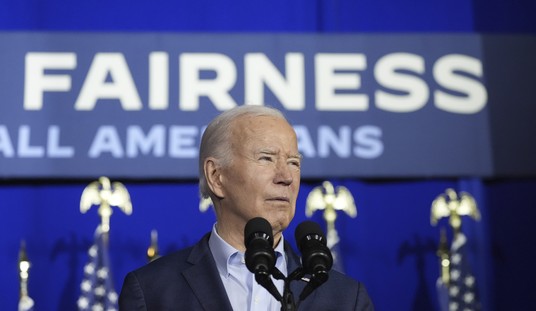Muscle mass comprises between 30 and 50 percent of your body’s total weight — the more the better. Composed of more than 650 muscles, it is the primary user of calories in the active human body, and the storage facility for most of the body’s protein. Muscles are the motors which move the skeleton — the system of levers we use to interact with our environment — and are therefore responsible for our physical relationship with our surroundings.
Fat, on the other hand, is where calories are stored, not used. Mostly, fat just lays there, using very few calories itself but hoping you’ll use the calories it stores as fuel for muscle contraction. In great quantities, the few hormones produced in adipose tissue may become metabolically significant, and in great quantities adipose tissue can become the host of significant amounts of inflammation.
But bodyfat itself is not the problem. The processes that allow for the accumulation of bodyfat are the problem.
Accumulating bodyfat means that there is an imbalance which must be addressed, usually by correcting the quality and quantity of the diet and physical activity schedule. On very rare occasions, there is a profound hormonal imbalance, too. However, morbidly obese people will almost always show you how they got that way if you accompany them to the grocery store. No matter what they tell you, these people eat lots and lots of very s***** food — lots of fat, sugar, and cheap alcohol.
They are a separate situation, and not the topic of this discussion.
We’re discussing you — either your slightly overweight, normal, or underweight self, of the age demographic that reads PJ Media — and your muscles. And for you, gaining muscle is more important than losing fat. Muscle is important metabolically, in a much more significant way. Muscle tissue does much more than just move you around — it keeps you alive, and the more you have, the more alive you get to stay.
Muscle tissue is the body’s most important regulator of blood sugar, and therefore of insulin. Muscle burns most of the carbohydrate calories you use during the day, and thereby controls both the release and subsequent fate of the insulin secreted by your pancreas. Type II diabetes is very strongly negatively associated with the health and size of your muscles, because the activity that makes muscles big and healthy is also the activity that uses and regulates sugar and insulin.
It is not an overstatement to say that the activity that keeps muscles big is also the activity that prevents type II diabetes.
This is very important in a country with diabetes in almost 10% of the population. Diabetes is a very bad deal, because it shortens life expectancy by an average of 10 years and makes your shorter life more expensive and less fun.
Muscle tissue also performs several other important jobs besides moving you around. It modulates immune function by providing an active repository for immune system cell component proteins — very important for a long illness — and it serves as a receptor site for sex hormones, thereby regulating some of their functions as well.
But mainly, muscle tissue burns calories, by using energy when it generates the force of contraction, and the processes by which energy is used are processes the human body is designed to perform. When your muscles fail to perform these processes — in other words, when you sit squarely on your ass, failing to use your muscles — the machinery gets disassembled because there is no market for it, and maintenance is expensive.
And the less muscle mass you have, the harder it becomes to keep fat from being deposited. Muscles burn both fat and carbohydrate for fuel, and the bigger the fireplace, the more fuel the house can burn.
So the presence of this machinery is very important, but its loss is a normal part of aging, for several reasons. In his most excellent and very widely-read article for our website, Dr. Jonathon Sullivan explains the process in detail.
He also makes the point that the only practical way to slow or reverse these processes is to subject the body to the type of stress that makes muscles need to be bigger, and the thing that most people become less likely to do as they get older. If loss of muscle mass is a function of aging, maintaining that muscle mass requires that you do the things that would actually make it grow in a younger person — strength training and eating enough quality protein and calories to enable its growth.
So the question we started with — which is more important, the loss of body fat or the increase in muscle mass? — is easy to answer. But if this is so, why do the vast majority of people who start an exercise program do so with the expressed intention of “losing weight,” by which they really mean losing bodyfat?
Because they don’t know any better, unfortunately. The popular culture’s perspective on the subject is pretty uniform: Healthy = Skinny. And as usual, I’m telling you that this is wrong.
Not only is it factually incorrect, it can get you prematurely dead, depending on your age.
Skinny is a bigger problem for some people than it is for others. Clinical Illness Myopathy is an acute sarcopenia — the short-term loss of muscle mass experienced by very sick or injured people who cannot preserve muscle mass due to the illness or injury itself and the inability to eat or move enough to preserve muscle function. The loss of 40% of lean body mass is usually fatal, and in older people the loss of muscle mass is a very accurate predictor of mortality.
This cannot be overemphasized: the older you are, the more important your muscle mass becomes to you, whether you know it or not.
If you get sick or hurt, your muscle mass is your bank account for healing up and getting better — the more you have in the bank, the longer you can hold out when things get weird. This means that being old and skinny is not a useful thing if you want to enjoy your last decades. The young can get away with being skinny, because the young don’t usually get chronically ill or injured. Such aesthetic carryovers from your misspent youth are best abandoned, because skinny and muscular are incompatible concepts.
In fact, the healthiest older people are a little overweight. The very popular (because it is easy to calculate) Body Mass Index, or BMI, assigns the terms Very Severely Underweight, Severely Underweight, Underweight, Normal, Overweight, Obese, Severely Obese, and Very Severely Obese to everybody in the human race, based on their height-to-weight ratio. This seems a little broad to me, since it fails to take muscle mass into account. A person can be 5’8” and either be a fat slob or a muscular freak at the same BMI.
The medical community has recently begun to admit that “overweight” is a better place to be if you’re not a kid anymore.
With a BMI calculated at 34.2, I am almost “Severely Obese.” I am also 59 years old, and I can squat 365 and deadlift 500. I am not worried about my Body Mass Index. BMI offers some useful predictive capacity for health problems in younger sedentary populations, but its usefulness for older people is very limited.
Why? Always remember this often-unappreciated fact: Obese people carry more muscle mass than underweight people, because the process of getting fat is a growth process, and the body grows fat and muscle at the same time. In the absence of chemical (anabolic steroid) assistance, every weight-gain or weight-loss episode is composed of both bodyfat and lean body mass/muscle.
In other words, when you lose bodyfat, you lose some muscle mass, too. Always. And when you gain bodyfat, you gain some muscle mass too. Always.
A bodybuilder in the final stages of contest preparation loses some muscle mass as she drops bodyfat. A man sitting on his couch who gains 100 pounds eating chips and queso gains some muscle mass. More importantly, when you gain muscle mass, you will also gain a little bodyfat at the same time. You can skew the percentages in the direction you want with training, careful control of your diet, and anabolic steroids, but you cannot violate the Laws of Physiology.
And this explains why it’s better to approach your 60s, 70s, 80s, and beyond a little fluffy around the middle. Not hog-fat, but carrying enough bodyweight that you look muscular instead of skinny. It’s healthier, you’ll have more muscle mass, you’ll look and feel better, and if something bad happens you have a much greater chance of surviving than your fashionably thin retirement home roomies.










Join the conversation as a VIP Member